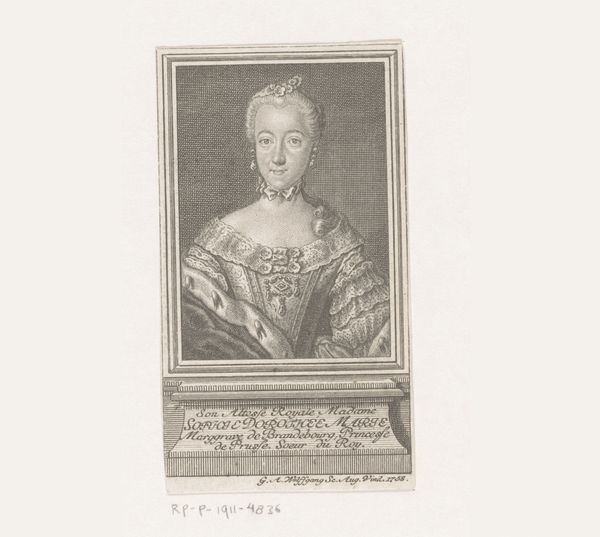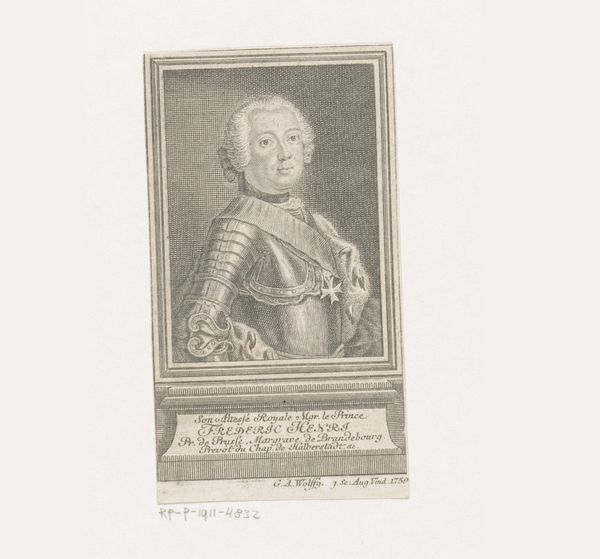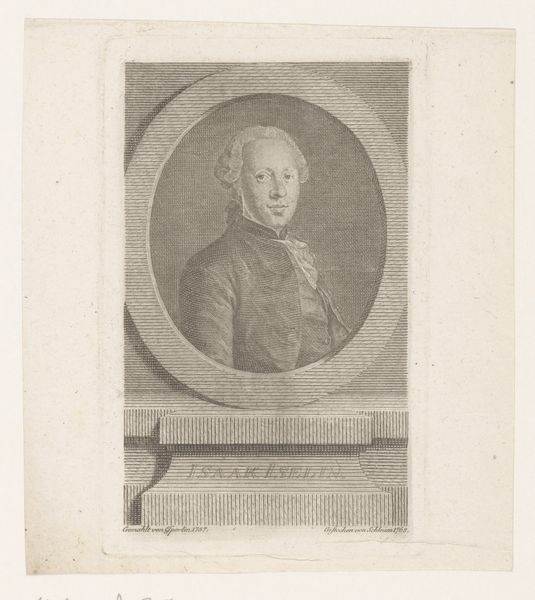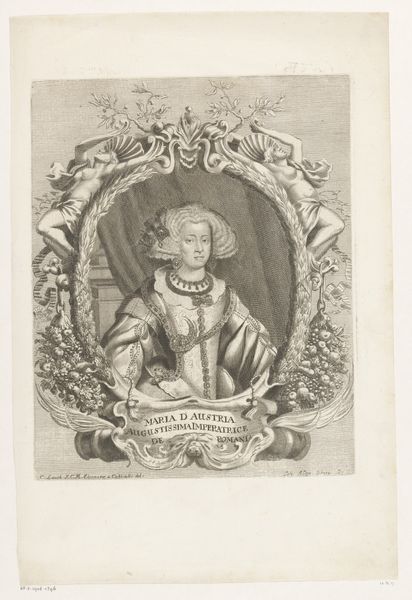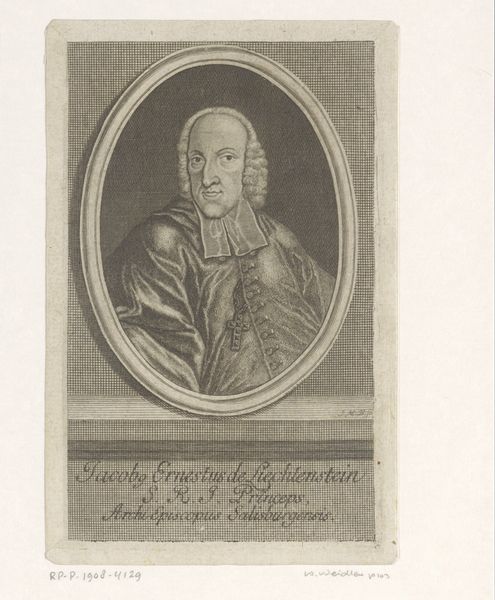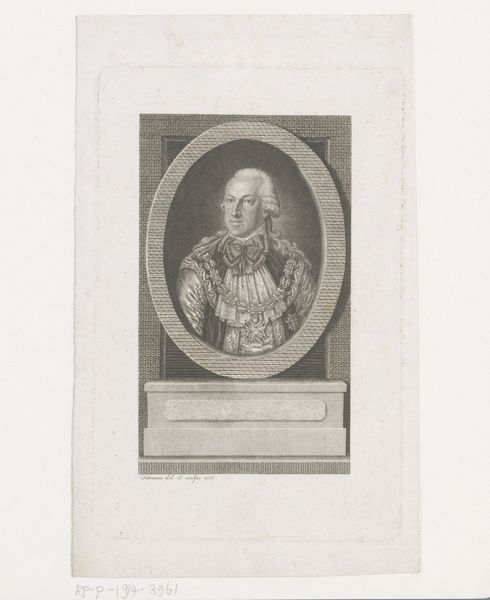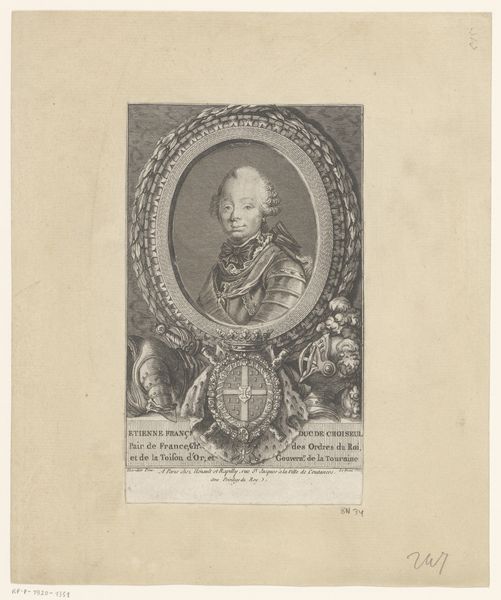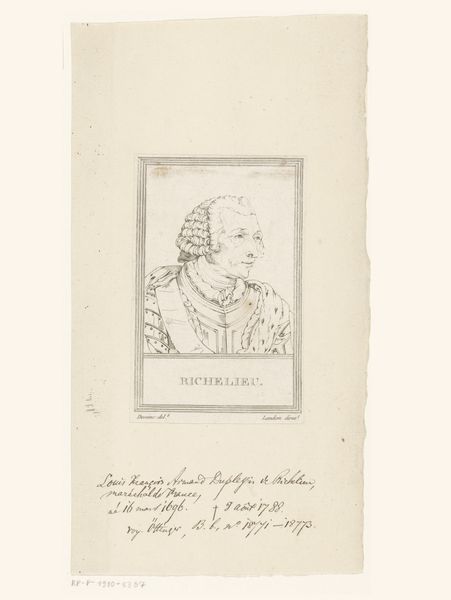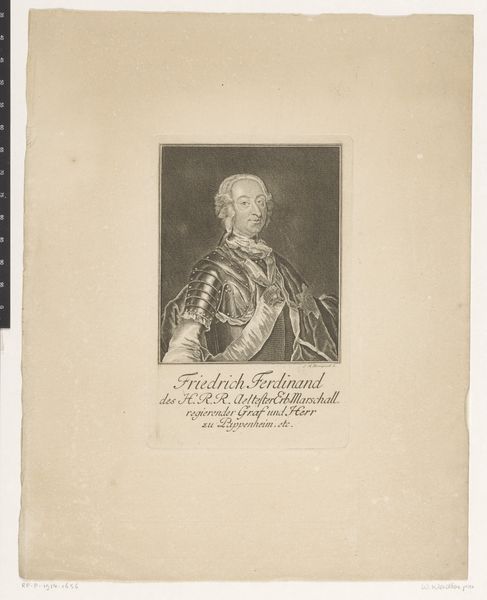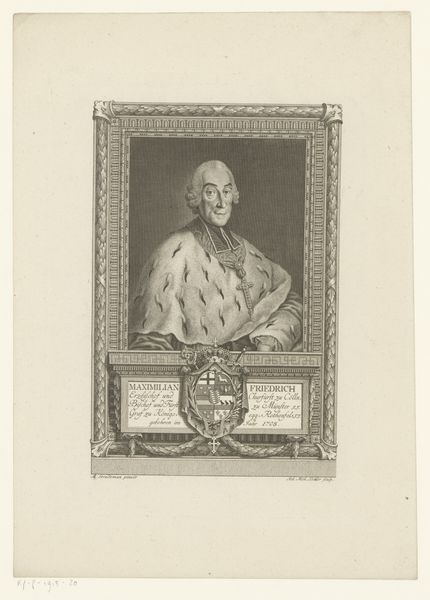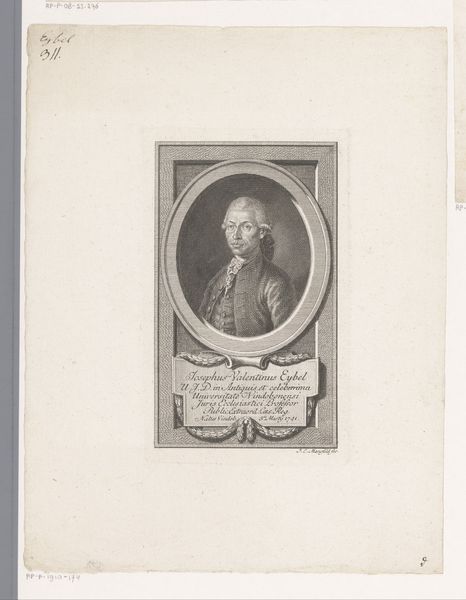
Portret van Friedrich Wilhelm, Markgraf von Brandenburg-Schwedt 1758
0:00
0:00
gustavandreas16921775wolfgang
Rijksmuseum
print, engraving
#
portrait
#
baroque
# print
#
old engraving style
#
history-painting
#
engraving
Dimensions: height 90 mm, width 51 mm
Copyright: Rijks Museum: Open Domain
This portrait of Friedrich Wilhelm, Margrave of Brandenburg-Schwedt, was made as an engraving by Gustav Andreas Wolfgang around 1768. Engraving is an intaglio process, meaning that the image is incised into a plate, usually copper, using a tool called a burin. The lines that the burin creates hold ink, and when paper is pressed against the plate, the image is transferred. The crispness of the line, the precision of the shading – all speak to the engraver’s skill. It's a labor-intensive process, demanding meticulous focus. Engravings like this were not “original” works of art as we think of them today. They were made to circulate widely. Consider how this relates to the man portrayed: a member of the ruling class, whose image was deemed worthy of dissemination. The print medium thus reinforces existing power structures. But it also allowed for a wider distribution of images, subtly shifting the dynamics of artistic production. So, next time you see an engraving, think not only of the image, but also of the skilled hands and social forces that brought it into being.
Comments
No comments
Be the first to comment and join the conversation on the ultimate creative platform.
